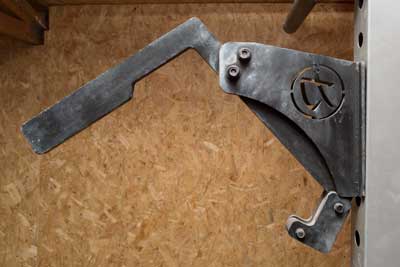 Monolift Attachments for Power Racks were released a few years ago, a massive benefit for the home gym trainer, especially for those training on their own.
Monolift Attachments for Power Racks were released a few years ago, a massive benefit for the home gym trainer, especially for those training on their own.
This is a long term review of my experience with the power rack monolift attachment.
The first monolift attachment I saw was the Rogue Fitness Monolift Attachment, as soon as seeing one the advantages were obvious, and I wanted one.
At the time I couldn’t find any in the UK, but fortunately, it wasn’t long until Strength Shop released their own version. Luckily for me I had a Strength Shop rack, most attachments only fit racks made by the same company.
A good marketing ploy for the equipment manufacturers, not good for those who already own power racks with no available monolift attachments.
Cant find a monolift attachment for your Power Rack?
Click Here For A Monolift Attachment That Will Fit Any Power Rack
Monolift Attachment Advantages
The attachments themselves are a solid piece of kit. Good home gym equipment constructed from steel should last for years, these are no exception. The attachments include a mount and a weighted arm.
The mount incorporates a pin, you turn the attachment to the side insert the pin into a hole on the power rack and then push in, this locks the attachment solid into the rack.
The weighted arm is attached with a strong bolt. This bolt is the weakest link and probably would be the first thing to break. I haven’t broken it yet and don’t envisage so anytime soon. If the bolt does get damaged, it could easily be replaced.
The arm features a hook, large enough to secure the bar but small enough to hinder racking and unracking. The arm is shaped in such a way that when the bars loaded, it swings away from the rack when the bars unracked, it swings back towards the rack.
This mechanism means there are no walkouts for squats and no pullover portion for bench presses. Walkouts are part of squatting, and a necessity for most raw Powerlifting meets.
The monolift makes squatting easier without the walkout and safer, very important when training on your own. The bar slipping out of position on your back during walkouts used to happen quite frequently, especially with the heavier weights, the attachment eliminated this problem.
The monolift attachment comes into its own for bench pressing, unracking a bar and pulling it over is tricky if not impossible especially for presses in the 1-3 rep ranges. The monolift attachment eliminates this and allows you to unrack the bar in the pressing position. Get under the bar, so it’s in line with your natural top position. Press up, and the attachment disengages, allowing you to start the lift from the ideal position. When you have finished the set, let the bar drift back onto the hooks which are now sitting against the power rack.
Monolift Attachment Disadvantages
The attachments are heavy; they need to be to cope with loaded barbells. They take a bit of getting used to when it comes to fitting to the power rack. They are clunky to move around when compared to standard J hooks.
For front squatting I have found the hooks to close, any sort of forwarding lean will cause the bar to bang into the hooks, as such I still walk out with front squats. For back squatting it’s best to unrack the bar with the hooks in the furthest away position possible, otherwise if you get folded over during the squat you may bang into the hooks on the way up.
The monolift attachment doesn’t work very well for band exercises such as banded bench presses and squats. When under tension with bands, you need a solid platform to rack too. This isn’t really an issue as band exercises are generally submaximal.
Conclusion
I wouldn’t be without my Monolift Attachment it’s excellent for squatting and bench pressing. I have also used it to good effect for incline and decline presses. The attachment makes racking and unracking safer and easier, and anything that increases safety in the home gym is worth its weight in gold.
Every power rack owner should have a Monolift Attachment.